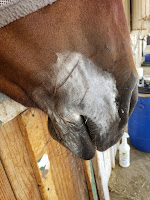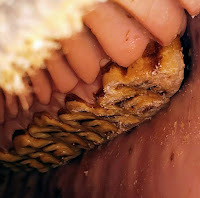High Desert Veterinary Service
Chrysann Collatos VMD, PhD, DACVIM LA
775-969-3495 (Office) 742-2823 (Cell)
hidvet@gmail.com HighDesertEquine.com
Building Healthy Partners
Fall
2019 News & Notes:
Ø Clinic
Schedule
Ø Frustrating
Summer Sores
Ø Beware of Harmful Dentistry
Once it got here, we enjoyed a gorgeous summer with our horses this year. Cold weather is ahead, and there are
IMPORTANT steps to take in preparation for your horse’s transition to winter. Your
Fall Clinic appointment is the perfect opportunity to ensure you are up to date
with your horses’s preventive health care.
See you in September!
Dr. Chrysann
Fall Clinic Schedule
Routine Fall exam
includes flu/rhino vaccination, deworming or fecal examination, annual
dentistry consult, and sheath cleaning.
Also consider Microchipping!
To reserve an
appointment, call 775 969 3495 with:
- Your Name, Phone # and Clinic Date
- Number of Animals, and Services wanted
Your call won’t be returned until three days before your clinic when we will give an estimated time of arrival at your address. Please be sure horses are caught and haltered
30 minutes beforehand!
Location Date
Rancho Haven/Sierra Ranchos1
Fri Sept 6
Rancho Haven/Sierra Ranchos2
Sat Sept 14
Red Rock
North/Silver Knolls 1 Fri Sept 6
Red Rock
North/Silver Knolls 2 Sat Sept 14
Span Springs/Palomino Valley 1 Fri Sept 13
Span Springs/Palomino Valley 2 Sat Sept 21
Antelope/Golden/Lemmon Valley 1
Sat Sept 7
Antelope/Golden/Lemmon Valley 2
Fri Sept 20
South & West Reno 1 Fri Sept 20
South & West Reno Sat
Sept 7
Discounted
prices ONLY AVAILABLE Clinic Day
Farm Call (per location) $14.00
Wellness Exam (mandatory) $17.00
West Nile $33.00
FluRhino $30.00
Strangles
Intranasal $34.00
Rabies $23.00
Tetanus/
Encephalitis $19.00
Ivermectin
Deworm $16.00
Coggins
Test $32.00
Sheath
Clean w/sedation $45.00
Fecal
parasite exam $19.00
Pre-registered
microchip $39.00
Summer Sores
–
What are they?
Your horse’s eyes are red,
swollen and itchy, or there is an odd sore at the corner of her mouth, or a wound
on her pastern that is getting larger and lumpier….all common presentations of
Habronemiasis, or Summer Sore. If left untreated, this common problem can
become an extremely challenging condition to resolve.
Summer sores are caused by stomach worm
larvae deposited in wounds by stable or house flies. Larvae licked up and swallowed by horses
complete their life cycle in the intestinal tract (where they do little harm),
but when stranded in broken skin they cannot mature and cause severe, chronic
inflammation. The result is a
non-healing, expanding wound.
 Treatment involves immune-suppressive
medication (steroids), destruction of larvae (dewormer) and surgical removal of
the larvae, proud flesh and granular inflammatory deposits from the lesion. I surgically excised the summer sore from
this horse’s lip, sutured the wound closed, and applied Alu-shield spray to the
wound and SWAT around the area. The
horse also received a carefully calculated dose of steroid, short-term
antibiotics, and Ivermectin deworming.
Treatment involves immune-suppressive
medication (steroids), destruction of larvae (dewormer) and surgical removal of
the larvae, proud flesh and granular inflammatory deposits from the lesion. I surgically excised the summer sore from
this horse’s lip, sutured the wound closed, and applied Alu-shield spray to the
wound and SWAT around the area. The
horse also received a carefully calculated dose of steroid, short-term
antibiotics, and Ivermectin deworming.
Unfortunately, summer sores often are not
recognized as something other than an uncomplicated wound until the disease
process is quite advanced. At this point
successful treatment can take weeks, incur high veterinary costs, and require intensive
wound management.
Habronemiasis has become a common problem
in our area, and is often seasonally recurrent.
Preventive measures include frequent deworming, fly masks, and
aggressive fly control.
Beware
of Harmful Dentistry
I took
this picture several weeks after this horse underwent aggressive motorized
dentistry. This is NOT how your horse’s teeth should look after dentistry.
Notice how the edges of the teeth are curved, the biting surface is smooth, and
the front of the first premolar has been removed. In the short term, this procedure
causes thermal damage and impairs the teeth’s ability to break down fiber, reducing
the intestinal digestive enzymes nutrient processing. And long term, it removes surface enamel from
the tooth that CAN NEVER BE RESTORED.
Year after year of this procedure will reduce the life of your horses’
teeth, but the damage may not be show until it is too late to change the
outcome.
 This
is what your horse’s teeth should look like after correct dentistry, whether
performed with hand tools or motorized tools.
Our understanding of equine oral health has come so far in the past
decade, there is NO EXCUSE for “over-floating”.
This
is what your horse’s teeth should look like after correct dentistry, whether
performed with hand tools or motorized tools.
Our understanding of equine oral health has come so far in the past
decade, there is NO EXCUSE for “over-floating”.
Annual dentistry is a vital part of LONG
TERM health care. Don’t let your horse’s condition in later years be
compromised by poor management today. Foot
care, nutrition, deworming, and DENTISTRY are the 4 corners of your horse’s longevity.
Ask me any questions at your fall clinic
appointment. An important part of my
role in your horse’s life is to answer your questions and keep you informed.
Call today to schedule your
Fall Clinic appointment!
HighDesertEquine.com
Building Healthy Partners



